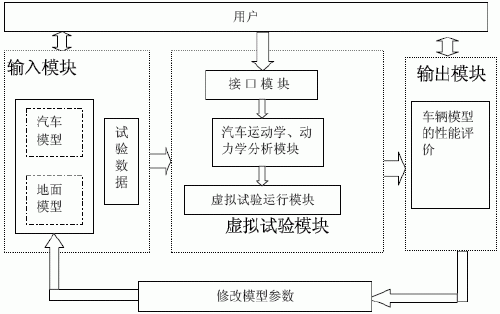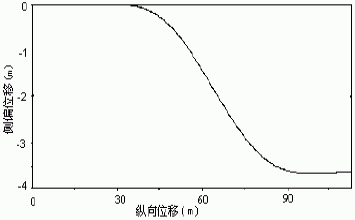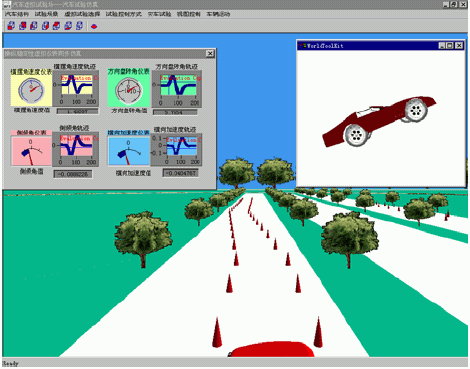Design and Development of Automobile Performance Test System Based on Virtual Reality Technology
1 Introduction
The emergence of virtual prototype technology and virtual reality technology has improved the traditional car design and test methods.
The digital car designed with virtual prototype technology is combined with a complex and changeable virtual test environment, and the real driver is used to simulate driving, which acts on the user with sight, hearing, touch, etc., making it immersive and interactive. , Human-vehicle-environment integration, you can directly feel the vibration, tilt, noise and other effects of the car, without danger and damage to carry out limit tests such as collision, tipping, etc., improve the abstract numerical curve simulation, break through the difficult to use Mathematical models are used to express the intricate driver's feelings and reactions. It can find potential problems in the early stage of the design, adjust and revise, and optimize. It has the advantages of saving money, repeatability, and no risk.
Typical examples are: Chrysler's new car development cycle has been shortened from 36 months to 24 months. Ford also announced the development of a fully digital car at the end of 1999. Mercedes-Benz Motor Company has completed a digital car prototype before 1998, and has achieved a strong virtual reality technology, which can perform intuitive and comprehensive simulation analysis, evaluation and improvement of the overall performance matching and body system layout design of the car at the design stage. .
Therefore, on the basis of consulting a large amount of data, this paper has designed the virtual test system of the car, and developed it with the manipulation stability test as an example. After comparing the actual test with the virtual test, the virtual test has better performance than the traditional simulation data processing. As a result, the person-vehicle-environment is integrated, which provides a new method for studying the vehicle closed-loop system. The details are described below.
2. System structure design
Automobile virtual test system is a complex system. It follows the basic principles of advancement, openness, reliability and so on. Based on the object-oriented design idea, it adopts a hierarchical, modular and standardized design method to keep the system functioning. Under the premise of realization, the structure is rationalized.
Automobile virtual test system is mainly composed of three parts: input module, virtual test module and output module, as shown in Figure 1. Import the car model into the virtual environment, perform kinematics and dynamic analysis on the car model according to the user's input control commands, and use the analysis data to "virtually reproduce the car test process" in the virtual scene. The user feels and experiences through various sensors The performance of the car is evaluated, and the model parameters are modified according to the evaluation. This process can be repeated continuously to modify the car parameters until the car obtains the optimal performance. This is briefly described below.

1. Input module: It mainly provides the input of vehicle, ground parameterized model and other information. In this module, the data of the actual vehicle test can also be input for comparison with the virtual test.
2. Virtual test module: mainly consists of dynamic analysis module, interface module and virtual test running module. Dynamic analysis module mainly calculates vehicle performance parameters in real time according to the vehicle's parameterized model and driver's behavior, and provides virtual test module The simulation data and the virtual test running module mainly provide users with a realistic virtual test environment, realize various state changes of the virtual vehicle during the test process, and feed back this information to the user. The interface module organically connects the real-time simulation operation part of the vehicle, the virtual operating environment part, sensors and other interface devices as well as users.
3. Performance evaluation module: In this module, the user comprehensively considers various sensory experiences of the virtual test under different working conditions, evaluates the performance of the vehicle, modifies the parameters of the vehicle model according to the evaluation results, and performs optimal design. This method breaks through the shortcomings of previous evaluation criteria, such as difficulty in establishing standards, difficulty in determining indicators, and poor visualization. In this module, the virtual test can also be compared with the actual car test, and the vehicle model can be modified according to the differences.
3. Development example of virtual test system
The author has developed a virtual experiment of manipulation stability as an example. First, the ADAMS / Car software is used to establish a digital virtual prototype of the car, and the simulation analysis of the steering stability is carried out. The virtual test environment is implemented by WTK (WorldToolKit) and Visual C ++, and the virtual instrument part is implemented by the NI ComponentWorks component. The simulation data of the dynamic analysis is transmitted to the virtual environment to visually and realistically realize the test, and the change of the data is accurately displayed through the virtual instrument. Using human-computer interaction technology, users can not only have a visual experience, but also immerse themselves in the virtual test environment through the AGC --- Viewer G stereoscopic observation system to truly experience the performance of the car and evaluate the performance of the car.
The following uses the single-shift line test in the vehicle's handling stability closed-loop test as an example to illustrate. Using ADAMS / Car, the author established a digital model of a car and designed it according to the single-shift line test method (such as trajectory, speed, etc.) Control file. In the process of vehicle dynamics simulation, this file controls the vehicle to drive along the prescribed route, and then extracts the main characteristic parameters of steering stability (such as steering wheel angle, yaw rate, roll angle and Lateral acceleration, etc.) data, combined with the single-shift line test scenario to dynamically observe the vehicle itself and the changes in parameters. In order to let users know the specific parameter changes during the car's movement accurately, the function of the virtual instrument is added. The virtual instrument is used to cooperate with the virtual scene to dynamically display the changes of various parameters of the car during the simulation process. In order to realize the immersion of the scene more realistically, a stereoscopic scene display effect with dual viewports has been developed. Through the AGC-ViewerG stereoscopic observation system, you can immerse yourself in the virtual test scene to feel and experience the test process. Figure 2 is the dynamic simulation analysis results (speed is 100km / h), and Figure 3 is the simulation scenario and virtual instrument changes during the virtual single-shift line test.

(a) Change of yaw displacement

(b) Changes in steering wheel angle, yaw rate, and lateral acceleration
Fig. 2 Changes of the main parameters of the single shift line test

Figure 3 Simulation scenarios and virtual instrument changes during the virtual single-shift test
4. Summary
With the application and development of virtual prototypes and virtual reality technology in the automotive industry, great progress has been made in the design and test research of automobiles. The multi-body system dynamics analysis software is used to obtain vehicle performance parameters, and the virtual vehicle performance test system can fully realize the "indoor virtual test". It is an extension of the future virtual prototype system. It is combined with virtual scenes by connecting some control equipment. It can make the user feel the movement of the car such as vibration, side deflection, and roll, and can add the subjective feelings of people to the evaluation of the performance of the vehicle, which has a strong practical significance. With the development of computer, image technology, sensor and other technologies, automotive virtual test technology has good development prospects.
Introduction
SCOTECH`s Mobile Substation Power Transformer plays an important role in the transmission and distribution of electrical power throughout the grid. A Mobile Substation is a self-contained trailer or container equipped with the necessary high and medium voltage components of a full substation, including Power Transformer, switchgear, disconnect switches (GIS, AIS or Hybrid),metering transformers, surge arresters, protection and control equipment, AC and DC auxiliary power and control system, other equipment can be supplied to meet customer specific requirements. They can be prepared, transported and operational in a very short time.
Scope of supply
Voltage level: up to 230KV
Rating level: up to 200MVA
Why SCOTECH
Long history- Focus on transformer manufacturing since 1934.
Technical support – 134 engineers stand by for you 24/7.
Manufacturing-advanced production and testing equipment, strict QA system.
Perfect service-The complete customer service package (from quotation to energization).
Mobile Substation Power Transformer
Mobile Substation,Mobile Transformer,Substation Transformer,Mobile Substation Transformer
Jiangshan Scotech Electrical Co.,Ltd , https://www.scotech.com
